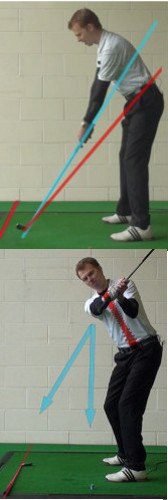
The swing plane is an important concept for left handed golfers to understand and implement into their technique.
Swing plane is the ascending and descending path the club takes when swung around the body. Many top professionals have vastly different swing planes. This could be because of physical stature or unique moves within the swing. Taller players will tend to have a more upright plane whilst shorter players a flatter one. When trying to replicate a professional’s swing plane they are best choosing a player of similar height and build. There are, however, a number of checkpoints players can use to get their swing plane close to perfect no matter their build. There are three back swing and two through swing positions which can be practiced.
Takeaway
The initial move away from the ball should be long and low, keeping the club low to the ground and extending the arms. If successful, halfway back, your club shaft should be parallel to the ground. When viewed from behind, the toe of the club will point up at the sky and be in front of the hands. This initial phase of the takeaway will ensure an on plane takeaway.
The Wrist Hinge
From the halfway back position the wrists hinge upwards. This hinging of the wrists makes the club shaft point at the sky and should bring the hands in front of the chest, again when viewed from down the line. The butt end of the club should now be pointing down at the ball-to-target line. This will set you up for the final stage of the back swing.
The Shoulder Turn
When the wrists have cocked you can simply turn your shoulders, bringing your right shoulder underneath your chin and turning your back to the target. A successful turn will see your right arm sit across the shoulder line at the top of the swing.
The Down Swing
A successful down swing will see a repeat of the preceding positions. As the club swings down, the hands will return to a position in front of the chest with the butt end of the club pointing down at the ball to target line. Using these checkpoints, left handed golfers can fire through the ball generating great power and accuracy.
There will be differences in swing plane depending on the club used. For example, a driver swing will appear to have a flatter plane when compare to a wedge. This is because of the different lengths of the clubs and the difference in a player’s spine angle when standing over the ball. Using the checkpoints above for each club will still ensure a correct plane.
Although every player will have a slightly different swing plane depending on height and build, using the checkpoints as a guide will help improve ball striking.






